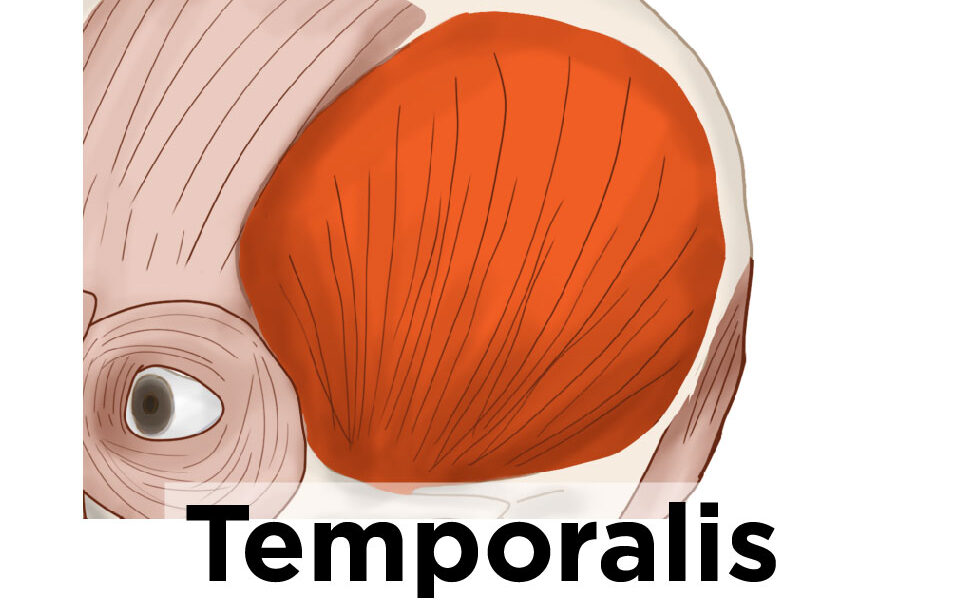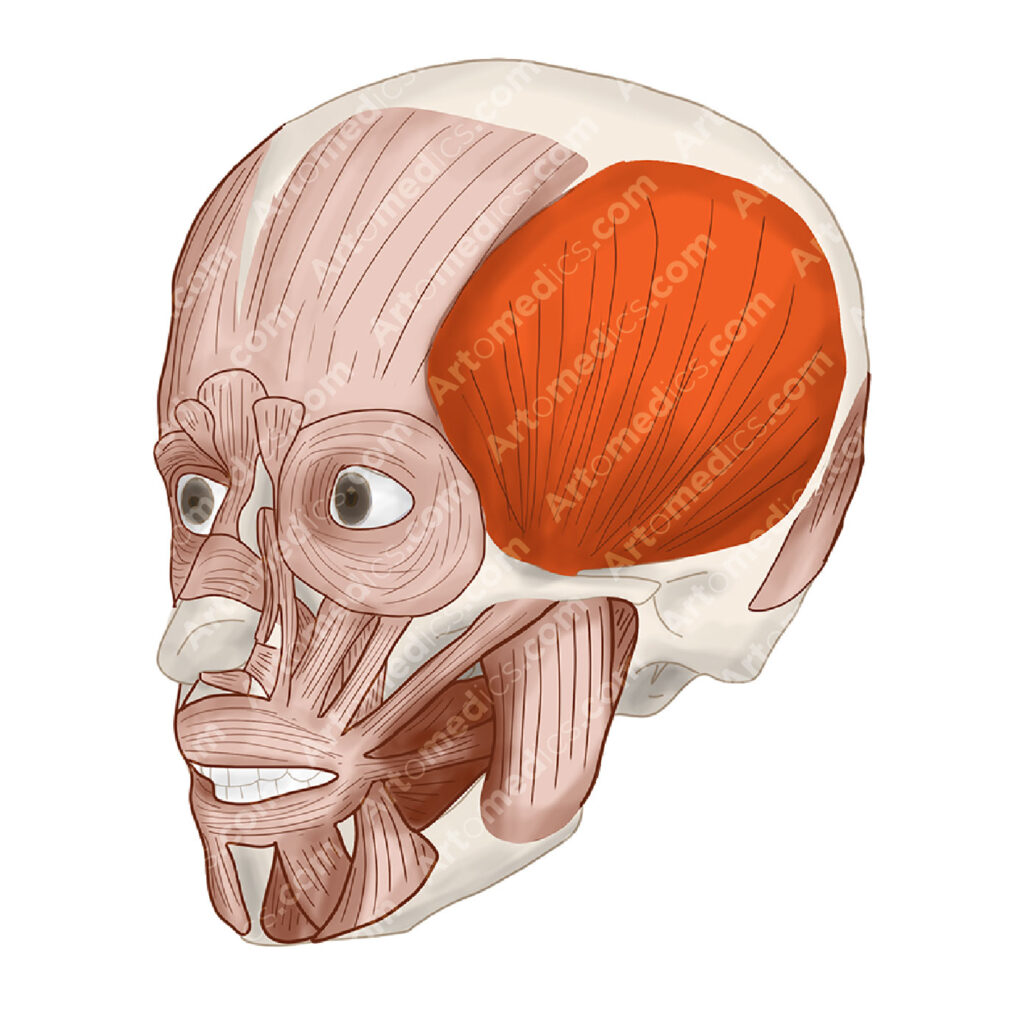Temporalis Muscle: a Powerful chewing muscle

We all chew and chomp at food all the time, clench our teeth when angry or holding back. All this is thanks to your friend Temporalis muscle.
Temporalis muscle goes from the side of the head all the way to attach itself into the mandible or lower jaw. That’s why it can pull the jaw with such force when contracted and help you chew (hopefully with your mouth closed).

Together with medial and lateral pterygoids and masseter muscles, they form part of the masticatory muscles. It’s involved in certain types of headache, for example in bruxism (people who grind their teeth during sleep) or clenching your teeth too hard for extended periods of time because you’re stressed.

What does the Temporalis Muscle do?
You could think of Temporalis as two parts: Anterior and Posterior.
The anterior part takes the action of pulling the jaw up (thus, closing the mouth).
The posterior part, pulls the mandible back (retrusion). It’s fibers run horizontally.
There’s also a middle portion, aids both aforementioned actions but also helps in moving the jaw to the sides.
It’s one of the most powerful muscles in the head.
Temporalis Muscle Basics
Innervation
Just like other muscles involved in chewing, it’s wired by the 3rd branch of the trigeminal nerve.
- Branches of the Mandibular Nerve
- Deep temporal nerves
Blood Supply
- Branches of the maxillary artery
- Deep temporal Artery
Muscle Attachments
Muscle origin
Temporal Fossa in the parietal bone.
Muscle Insertion
Coronoid process in the jaw.
Reference
Standring, Susan. Gray’s Anatomy: The Anatomical Basis of Clinical Practice. , 2016. Print.

Leave a Reply